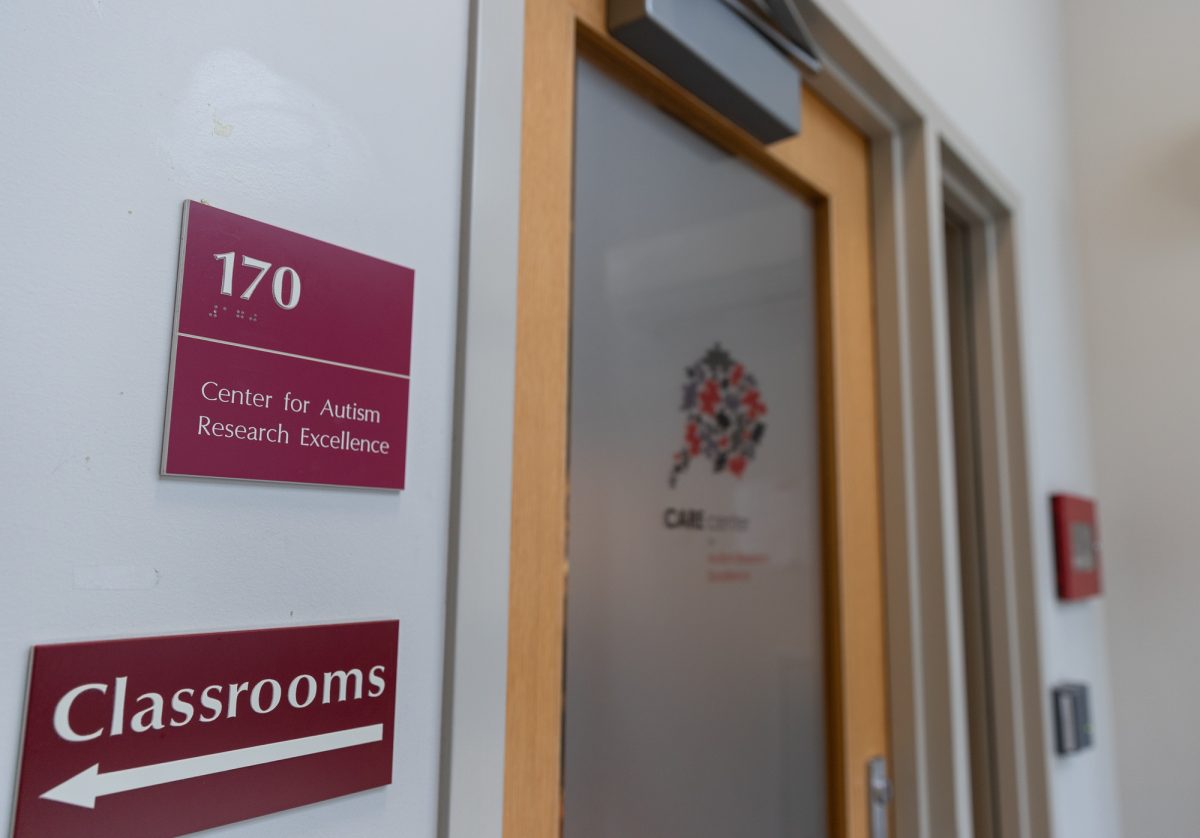Rainbow ribbons, flowers, dots, grids and twisting figures intertwine and swirl to create abstract shapes in artist Chie Fueki’s paintings, as they draw inspiration from Eastern and Western decorative and folk arts.
This week, the graduate program in painting at Boston University hosted Fueki as part of the Graduate Tuesday Night Lecture series.
“I tend to look for artists who reflect a wide range of artistic practices and approaches so the students can see that there is no one way to make art … although there are common threads,” said Josephine Halvorson, a professor of art and the chair of Graduate Studies in Painting.
Halvorson described Fueki’s work as “dazzling.”
“Its methodology, its colors — it’s optically very sensual,” Halvorson said. “She’s one of the most extraordinary painters today.”
Cloaked in a billowy, black top and wearing thick-rimmed glasses, the artist spoke in an intimate space to a group of about 50 graduate students and faculty members from both the painting and sculpture departments.
She began her lecture by talking about the places and snippets of pop culture she references in her works. Fueki showed images of ornamental architecture from the mountain village of Nikko, Japan, Mayan hieroglyphs, kimonos, Italian Renaissance works and a few Japanese anime comics.
Fueki was born in Yokohama, Japan, and grew up in São Paulo, Brazil. After moving to the United States, she received a bachelor’s from the Ringling School of Art and Design and a master’s from Yale University. The artist said she takes inspiration from all parts of the world she sees around her, as well as her own diverse background.
Fueki said she considers herself a “mixed painter,” who fuses different cultures and levels of consciousness through her depictions of spaces, objects and figures with a spectrum of colors and collages.
In the lecture, Fueki described the progression of her art and how she has moved from more abstracted pieces to figural painting. Over the past 20 years, Fueki has created a diverse multitude of works using acrylics, mulberry paper, ink and colored pencils.
She has painted geometric landscapes, sports imagery and Japanese anime superheros in suspended psychedelic spaces. Her more recent works are abstract portraits of her friends and memento mori still lifes, which are objects associated with death and mortality.
The artist said she made the transition to painting more realistic subjects in the hopes of creating a sense of familiarity and empathy between the viewer and the painting. Since experimenting with painting various subjects, Fueki said she has found herself growing as an artist.
“Learning about painting never stops,” Fueki said in the lecture. “The investigation of the painting is part of the process.”
The unofficial lesson of Fueki’s lecture was that it is important to embrace change as an artist. To Fueki, the art of painting is far from stagnant.
“I am interested in the language of painting because it can stretch time,” Fueki said.
Even now, she said she is constantly teaching herself how to paint.
“I think that’s what painting’s all about,” said Elizabeth Flood, a second-year graduate student in the College of Fine Arts who introduced Fueki’s lecture. “To hear Chie talking so honestly and generously about how she’s trying to learn through painting and put words to her work feels really familiar, especially in grad school.”
The artist has previously been invited to Boston University to visit students in their studios, and she was able to do this again with current students.
“She’s one of the most generous teachers I have ever met,” Halvorson said. “She really knows how to engage with students in a meaningful way.”
While she was on campus, Fueki visited 12 studios, so every student got the chance to interact with and learn from the artist.
“It might take a while to learn the visual language,” Fueki said. “But you can teach yourself to change.”
CORRECTION: A previous version of this article misstated the name of the lecture series and that Josephine Halvorson was a professor of painting. An updated version reflects this.
























































































































